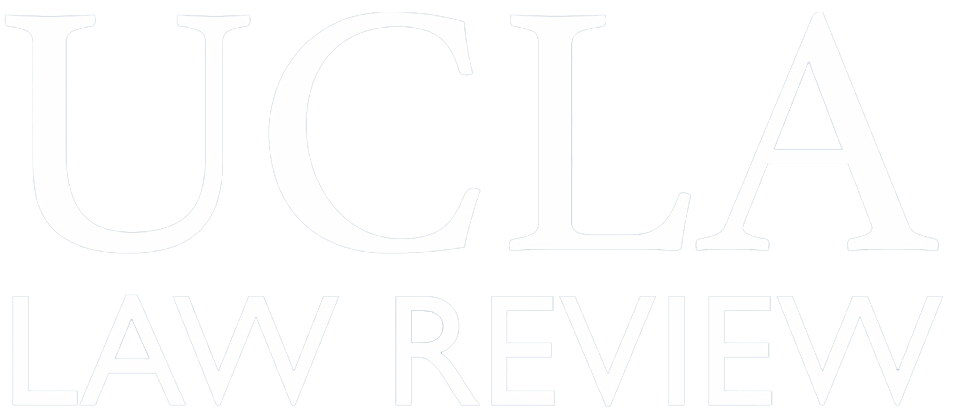The development of assisted reproductive technologies, including cryopreservation, or freezing, of embryos created through in vitro fertilization, has given rise to complex legal questions. Because cryopreservation permits indefinite storage of embryos, if couples fail to specify disposition directions, they may disagree regarding embryo treatment upon the occurrence of contingencies such as...
By Any Means Necessary: Using Violence and Subversion to Change Unjust Law
There remains law in the United States that discriminates against African Americans. Important legal advancements in racial justice in the United States historically have been accomplished by tactics that included subversion and violence. This Article evaluates the use of subversion and violence to change contemporary law perceived as discriminatory, when traditional methods are ineffective or...
Fair Use Across Time
This Article proposes that, as a copyright work ages, the scope of fair use, especially as to derivative works and uses, should expand. This is because the "market" for a copyrighted work has a temporal dimension; the copyrighted work has a market of a fixed number of years. In considering the fourth element of § 107 fair use, courts have discussed two kinds of situations in which the market for...
Tibet and Tax Revolts: Did Serrano Really Cause Proposition 13?
In this Article, we examine the relationship between Serrano v. Priest, the California Supreme Court's landmark school finance equalization decision, and Proposition 13, the state's famous property tax revolt. As school finance litigation continues in several states, opponents of equalization schemes have argued that Serrano "caused" Proposition 13. Prior to Serrano, the argument goes...
Insider v. Issuer: Resolving and Preventing Insider Trading Compliance Policy Disputes
During the 1990s, the use of stock-based compensation by U.S. companies skyrocketed. Many companies bound their officers and employees to insider trading compliance policies, requiring personnel to pre-clear proposed transactions in company securities with a compliance officer. These policies, however, frequently fail to stipulate the precise level of discretion afforded the compliance officer...
Remembering Gary
Deterrence and Corrective Justice
This Article considers, from the standpoint of corrective justice, Gary Schwartz's suggestion that tort law should be understood through a mixed theory that affirms both corrective justice and deterrence. When corrective justice and deterrence are both treated as determinants of tort norms, such a mixed theory is impossible, given that corrective justice treats the parties relationally and...
The Dauntless Gary Schwartz
Investment-Backed Expectations and the Politics of Judicial Articulation: The Reintegration of History and the Lockean Mind in Contemporary American Jurisprudence
The Fifth Amendment's Just Compensation Clause is a revealing reflection of the Framers' vigilance in preserving property rights and maintaining a balance of power between citizen and state, especially in the specific context of eminent domain. The principle that the state should be generally forbidden from taking private property for public use without just compensation is a leading motif in the...
Gary Schwartz: Energy, Intellect, and Exuberance
Targeting Gang Crime: An Analysis of California Penal Code Section 12022.53 and Vicarious Liability for Gang Members
In this Comment, Jennifer Walwyn examines California Penal Code section 12022.53 and the controversy among the California Courts of Appeal surrounding the vicarious application of firearm sentence enhancements to aiders and abettors of gang crime. She explores the traditional doctrines of conspiracy and aider-and-abettor liability and contrasts those doctrines with the operation of statutory...
